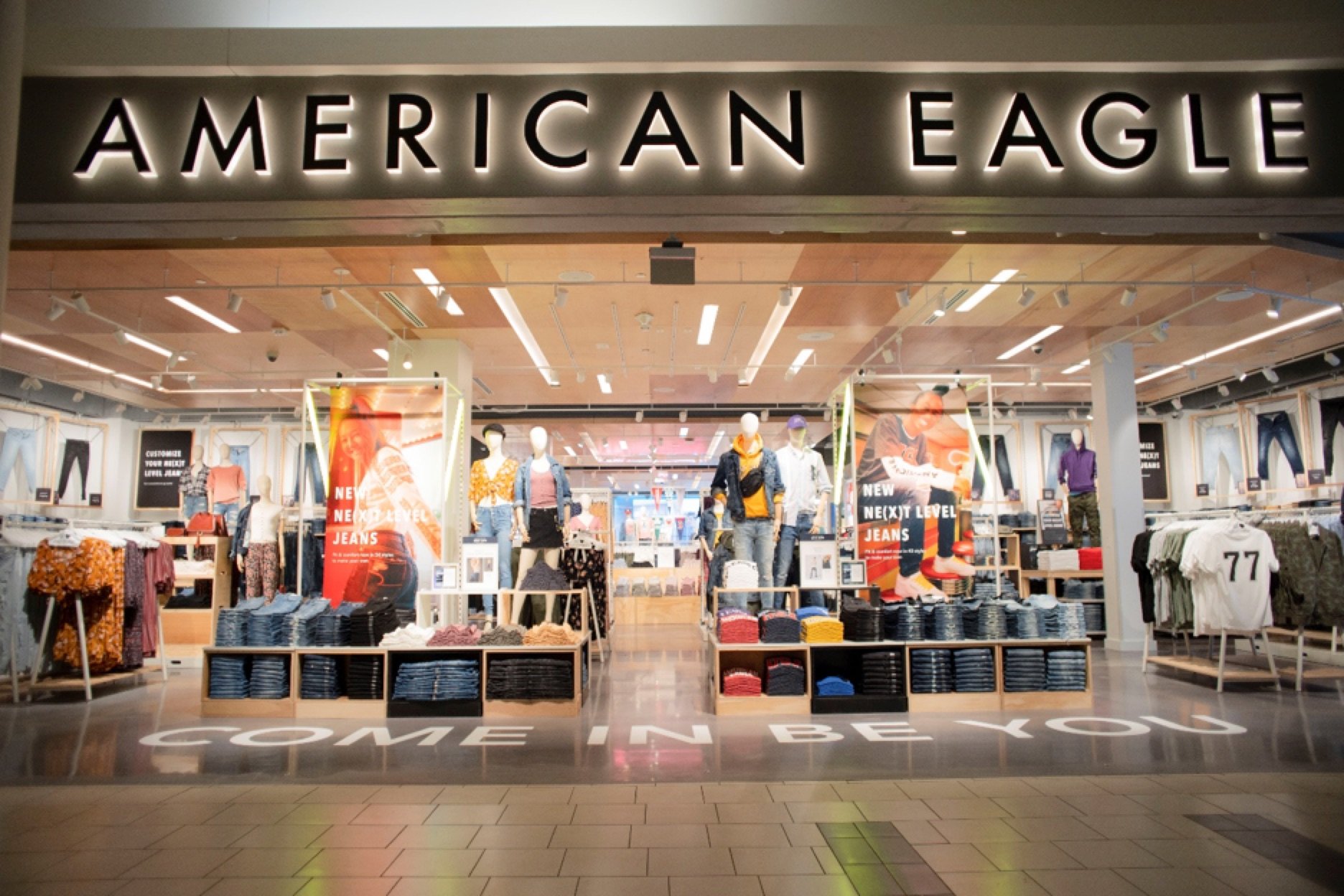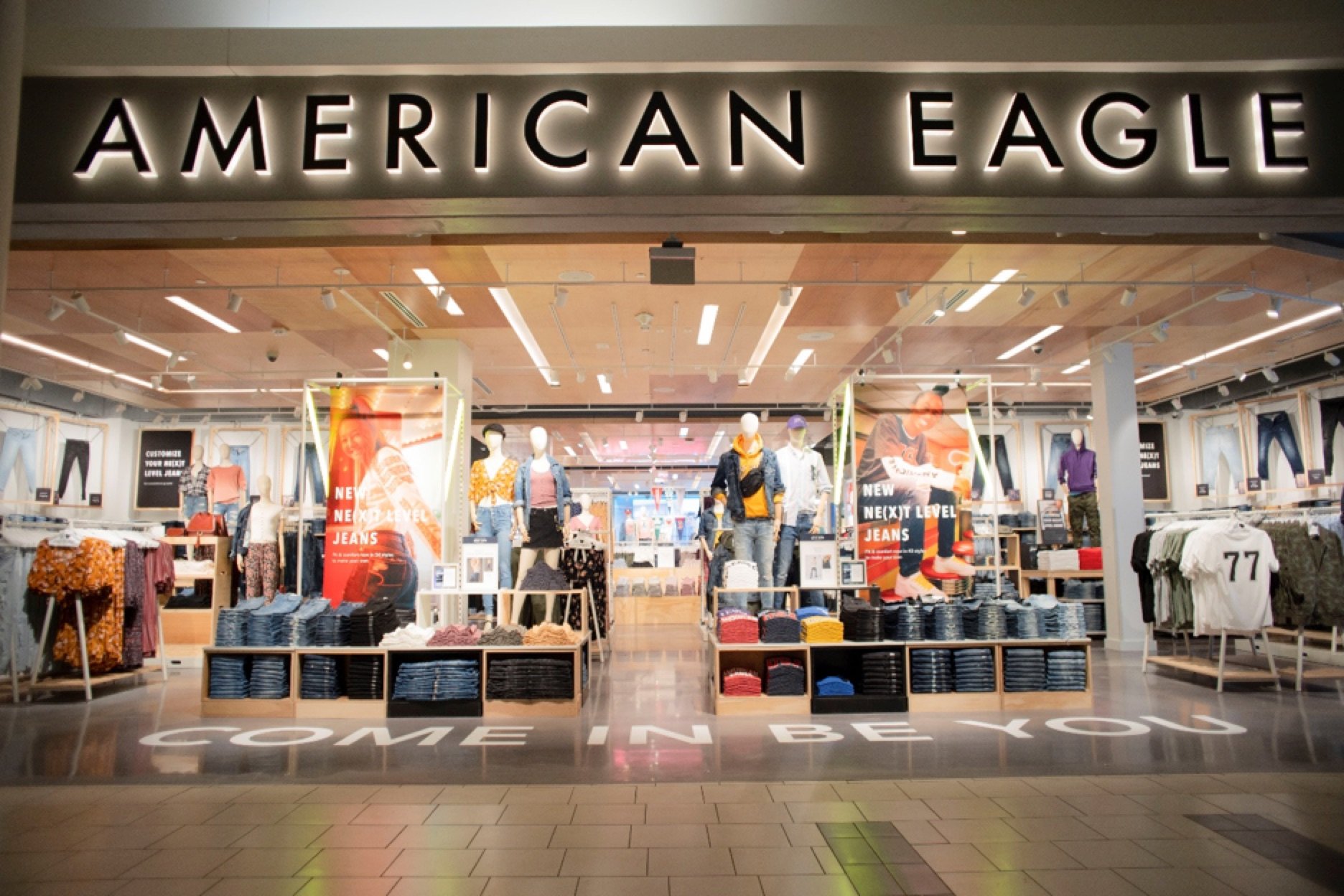Many U.S. retailers recently posted weaker-than-expected quarterly earnings, sparking concerns about a slowdown in consumer spending. Yet overall retail sales growth and consumer sentiment remain robust, and not all retailers were crushed. Let's take a look at two apparel retailers that survived that meltdown, and how their relative strength might help them outperform the broader retail sector.

Image source: Pixabay.
American Eagle Outfitters
Many apparel retailers have fared poorly over the past few years due to the rise of "cheap chic" chains like H&M, Forever 21, and Zara. Running too many brick-and-mortar stores also increased expenses and throttled retailers' ability to compete effectively against e-tailers.
Yet American Eagle Outfitters (AEO 1.43%) bucked that slowdown last quarter. Sales rose 7% annually to $749.4 million, topping expectations by $18 million. Total comparable store sales improved 6%, thanks to 4% growth at the company's core AE stores and 32% comps growth at its Aerie lingerie and activewear stores. Digital traffic, which accounts for about a fifth of overall business, rose over 20% and offset a slowdown in mall traffic.

American Eagle Outfitters' app. Image source: iTunes.
American Eagle's gross margin improved 170 basis points annually to 39.2%, thanks to favorable occupancy and product costs. Net income rose 39% to $40.5 million, or $0.22 per share, beating estimates by four cents. Looking ahead, American Eagle plans to reduce its overall store count by almost 2% by the end of the year. That move will slightly reduce its brick-and-mortar expenses and allow the company to rely more on its growing e-commerce business.
Analysts expect American Eagle to respectively grow its revenue and earnings by about 3% and 16% this year. The stock currently trades at just 11 times forward earnings, so shares are fairly cheap compared to AE's earnings growth potential. Furthermore, American Eagle pays a forward annual yield of 3.1%, which is much higher than the S&P 500's current yield of 2.1%.
Abercrombie & Fitch
For many years, Abercrombie & Fitch (ANF 3.24%) arguably embodied the worst qualities of the American apparel industry -- high prices, self-promoting logo designs, and oversexualized ads. The eccentric behavior and PR gaffes of former chairman and CEO Mike Jeffries antagonized younger shoppers, and its loud, cologne-filled namesake stores drove away shoppers, according to a Concordia University study.

Image source: Abercrombie & Fitch.
But after Jeffries' resignation at the end of 2014, the retailer finally turned over a new leaf. It reduced the music and scent levels at its stores, rearranged the lighting, props, and clothing to "simplify" the shopping experience, and sold less logo-based clothing. It also tested a "fully redesigned" store prototype for its Hollister brand, which will roll out in around 60 locations this year.
Shoppers have started to notice. During the fourth quarter, A&F's sales dipped 0.9% annually to $1.1 billion, but that beat expectations by $10 million and represented a significant improvement from a 13.8% plunge a year earlier. Comparable store sales rose 1%, with a 2% decline at A&F being offset by 4% growth at Hollister. Like American Eagle, A&F is investing heavily in digital channels and closing brick-and-mortar stores. 60% of its online traffic and 40% of its direct-to-consumer sales now come from its mobile apps.
A&F's gross margin also improved 100 basis points annually on a constant currency basis to 60.7%. Non-GAAP net earnings slipped 6.1% to $1.08 per share (including a $0.23 currency impact), but still exceeded expectations by $0.09. Analysts expect A&F's sales to stay flat in 2016, but earnings could improve 7% thanks to margin improvements and potential share buybacks. A&F currently trades at 17 times forward earnings, indicating that it's pricier relative to its earnings growth potential than AE, but it pays a beefier forward annual yield of 3.3%.
Which is a better contrarian bet?
Both AE and A&F have two moats which many of their peers lack -- popular secondary niche brands (Aerie and Hollister) which are growing at a faster rate than their namesake brands, and aggressive e-commerce initiatives which are resonating with customers. AE's stronger growth and lower valuations make it a better pick at current prices, but A&F could also become a worthy buy if its turnaround proves sustainable.







